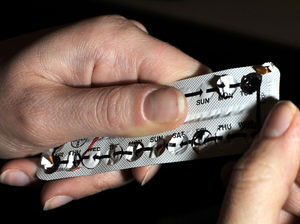Proportion of women in Shropshire on contraception falls following pandemic
The proportion of women in Shropshire on long-term contraception fell by nearly a tenth following the pandemic, new figures show.

It follows the national trend, with the figures revealing 9 per cent fewer women had access to long-acting reversible contraception in 2022 than in 2019, before the pandemic.
MSI Reproductive Choices, a non-governmental organisation providing reproductive healthcare, said while Covid-19 added pressure on healthcare services, many of the issues go back even further, with sexual and reproductive healthcare severely underfunded.
Office for Health Improvement and Disparities figures show 62.5 per 1,000 women in Shropshire aged between 15 and 44 were prescribed long-acting reversible contraception in 2022 – which includes the non-hormonal copper coil, hormonal coil, and the hormonal implant.
This was down from 68.2 in 2019, but an increase from 61.1 per 1,000 women the year before.
Across England, 44.1 per 1,000 women had a prescription for LARC in 2022. It was up from 41.8 per 1,000 women in 2021, but remained below pre-pandemic levels of 49.2 per 1,000.
However, Simphiwe Sesane, MSI Reproductive Choice's UK contraceptive and sexual health nurse consultant, said sexual and reproductive healthcare has been overstretched since before the pandemic.
She added: “A perfect storm of cuts, fragmented commissioning and an ageing workforce moving into retirement mean all too often I speak to people who have become pregnant while on contraception waiting lists. It’s simply not good enough.
“Finding the right contraception is transformative, yet too many are still struggling to get the information and support they need, particularly for long-acting methods like the coil and implant.
“These are some of the most effective ways of preventing unintended pregnancy and lack of access will no doubt be contributing to the unprecedented demand we are seeing for abortion care.”
The figures revealed a disparity between the most and least deprived groups nationally, with the rates at 36.6 and 53.7, respectively – a gap of 17.1 per 1,000 women.
Ms Sesane said the cuts have disproportionately affected the poorest parts of the country, meaning those least able to afford an unintended pregnancy are the most likely to experience one.
In Shropshire, 50 per 1,000 women aged under 25 and 66.7 per 1,000 women aged over 25 cited a form of LARC as their main method of contraception in 2022.
Meanwhile, across England, the proportion of women prescribed short acting combined hormonal contraception in 2022 was 8.1 per 1,000, meaning it halved compared to a rate of 16.1 in 2019.
The figure stood at one per 1,000 women in Shropshire – down from 4.5 three years prior.
Dr Janet Barter, president of the Faculty of Sexual and Reproductive Healthcare, said: “Access to the full range of contraceptive methods, including LARC, is a fundamental right.
“A combination of funding cuts and fragmented commissioning services means that care is not structured around women’s needs, negatively affecting access to essential healthcare.
“We call on the Government to take urgent action to address these barriers. It is crucial that everyone in need of contraception can access comprehensive care wherever and whenever they choose to.”
The Health and Social Care Secretary, Victoria Atkins, spoke at the Woman's Health Summit in January and provided updates on the Women's Health Strategy 2024 priorities.
She said: “We should be able to control when and if we fall pregnant. We have therefore made contraception more accessible through our Pharmacy First programme.
“From December, oral contraception is now available on more high streets, using our pharmacists to their full potential - making it faster, simpler and fairer for women to access this healthcare.
“We will also roll out long-lasting contraception through women’s health hubs.”





